Zuyi Li
Physics-Constrained Backdoor Attacks on Power System Fault Localization
Nov 07, 2022Abstract:The advances in deep learning (DL) techniques have the potential to deliver transformative technological breakthroughs to numerous complex tasks in modern power systems that suffer from increasing uncertainty and nonlinearity. However, the vulnerability of DL has yet to be thoroughly explored in power system tasks under various physical constraints. This work, for the first time, proposes a novel physics-constrained backdoor poisoning attack, which embeds the undetectable attack signal into the learned model and only performs the attack when it encounters the corresponding signal. The paper illustrates the proposed attack on the real-time fault line localization application. Furthermore, the simulation results on the 68-bus power system demonstrate that DL-based fault line localization methods are not robust to our proposed attack, indicating that backdoor poisoning attacks pose real threats to DL implementations in power systems. The proposed attack pipeline can be easily generalized to other power system tasks.
Event-driven Two-stage Solution to Non-intrusive Load Monitoring
Jul 27, 2021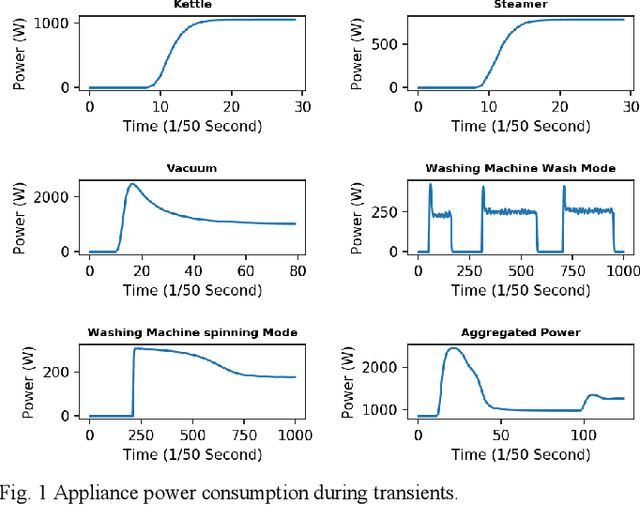

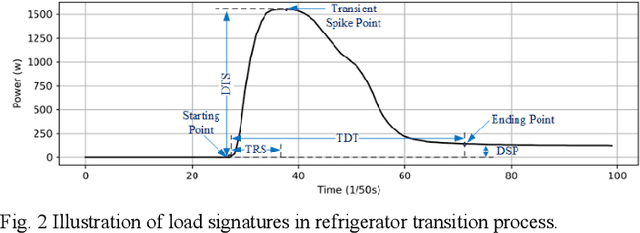

Abstract:Existing methods of non-intrusive load monitoring (NILM) in literatures generally suffer from high computational complexity and/or low accuracy in identifying working household appliances. This paper proposes an event-driven Factorial Hidden Markov model (eFHMM) for multiple appliances with multiple states in a household, aiming for low computational complexity and high load disaggregation accuracy. The proposed eFHMM decreases the computational complexity to be linear to the event number, which ensures online load disaggregation. Furthermore, the eFHMM is solved in two stages, where the first stage identifies state-changing appliance using transient signatures and the second stage confirms the inferred states using steady-state signatures. The combination of transient and steady-state signatures, which are extracted from transient and steady periods segmented by detected events, enhances the uniqueness of each state transition and associated appliances, which ensures accurate load disaggregation. The event-driven two-stage NILM solution, termed as eFHMM-TS, is naturally fit into an edge-cloud framework, which makes possible the real-world application of NILM. The proposed eFHMM-TS method is validated on the LIFTED and synD datasets. Results demonstrate that the eFHMM-TS method outperforms other methods and can be applied in practice.
Adaptive Event Detection for Representative Load Signature Extraction
Jul 23, 2021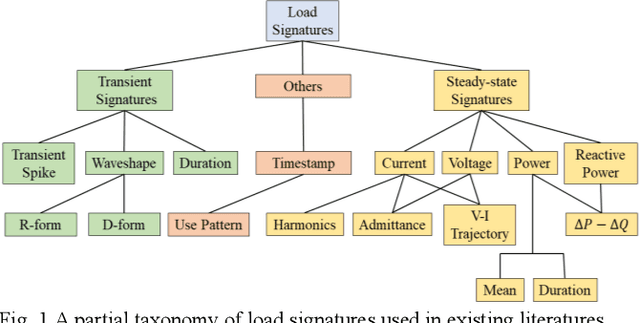
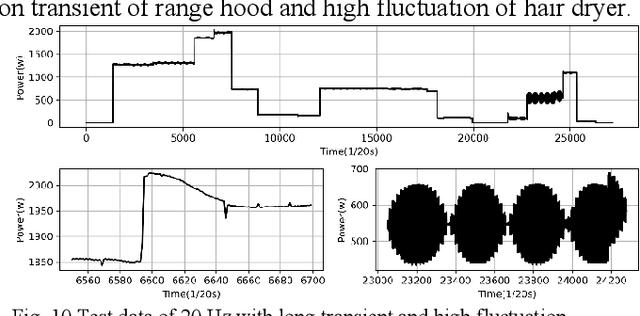
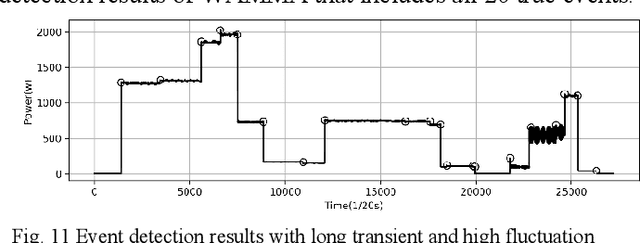
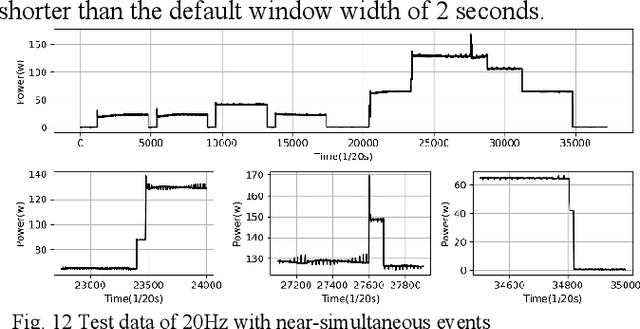
Abstract:Event detection is the first step in event-based non-intrusive load monitoring (NILM) and it can provide useful transient information to identify appliances. However, existing event detection methods with fixed parameters may fail in case of unpredictable and complicated residential load changes such as high fluctuation, long transition, and near simultaneity. This paper proposes a dynamic time-window approach to deal with these highly complex load variations. Specifically, a window with adaptive margins, multi-timescale window screening, and adaptive threshold (WAMMA) method is proposed to detect events in aggregated home appliance load data with high sampling rate (>1Hz). The proposed method accurately captures the transient process by adaptively tuning parameters including window width, margin width, and change threshold. Furthermore, representative transient and steady-state load signatures are extracted and, for the first time, quantified from transient and steady periods segmented by detected events. Case studies on a 20Hz dataset, the 50Hz LIFTED dataset, and the 60Hz BLUED dataset show that the proposed method can robustly outperform other state-of-art event detection methods. This paper also shows that the extracted load signatures can improve NILM accuracy and help develop other applications such as load reconstruction to generate realistic load data for NILM research.
 Add to Chrome
Add to Chrome Add to Firefox
Add to Firefox Add to Edge
Add to Edge